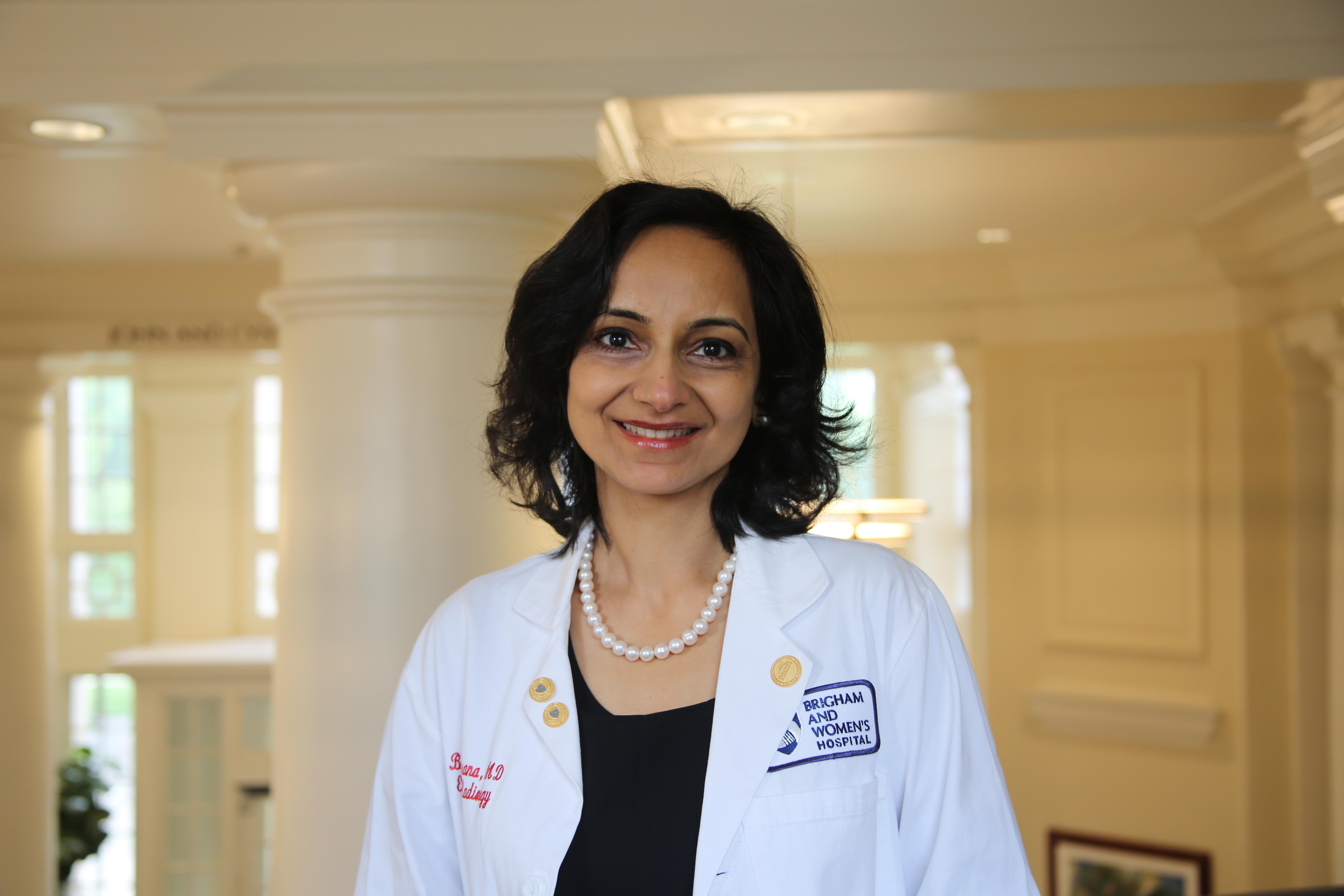This year’s BRIght Futures Prize finalists are pursuing forward-thinking and inventive research to improve patient care. Each of the three finalists hopes to receive the $100,000 BRIght Futures Prize, which will be awarded at Discover Brigham on Wednesday, Nov. 7. Read about their work below, and vote for your choice.
Bharti Khurana, MD
Director, Emergency Radiology Fellowship, Department of Radiology
What problem are you trying to solve?
Intimate partner violence (IPV), defined as physical, sexual or emotional violence between partners or former partners, is a critical public health issue and widely prevalent. One in four women and one in seven men have reported experiencing severe physical violence from an intimate partner in their lifetime in the U.S. IPV has both short- and long-term negative health consequences, and even childhood exposure to IPV has been linked to adverse mental and physical health effects in adults. Half of female homicides between 2003 and 2014 have been linked to IPV. Despite how often IPV occurs, many victims think they are alone, and cases can go unreported for decades.
The medical community could play a vital role in detecting IPV early and preventing its perpetuation. But IPV can be a very difficult subject to raise with a patient. Also, IPV happens mostly within the confines of the home and evidence is mostly elusive. Although questionnaires about safety have helped, the proportion of identifiable IPV cases to date only represents the tip of the iceberg. There is more that we as radiologists can do by looking specifically for early signs of IPV and providing opportunity to offer preventive services.
What is your solution?
We are creating new tools to empower clinicians to identify patients who are experiencing IPV. Our goal is to develop an integrated system that uses patterns derived from expert analysis of historical imaging and clinical data, detects and classifies injuries for their likelihood of being as a result of IPV, and automatically alerts clinicians if a patient’s injuries have low or high-risk probability for IPV.
To do so, we plan to use machine learning – that is, teach a computer program to recognize signs of IPV based on radiological and clinical findings from known IPV cases. This will give us a comprehensive picture and help generate a checklist to identify those most at risk. In addition, our multidisciplinary team will design conversational guides and training for social workers and clinicians to approach the patients who are identified as being at high risk for IPV but are not forthcoming.
How will your research project benefit people?
Intervening early means preventing adverse physical and mental consequences that result from IPV. With funding from the BRIght Futures Prize, we will be able to take the next step toward identifying radiological findings and clinical risk factors in patients with documented IPV.
Our goal is to give clinicians the tools, classification models, statistical evidence and alert systems for greater confidence and robustness in findings, empowering them to open a dialogue with their patients about IPV. We hope that this will have a ripple effect, changing the lives of patients and their families; strengthening the role of the medical community in identifying IPV; and breaking the silence around IPV in our society.
Collaborators and Affiliations:
George Dyer, MD, program director, Harvard Combined Orthopaedic Residency Program, Department of Orthopaedic Surgery
Annie Lewis-O’Connor, NP, PhD, founder and director of the Coordinated Approach to Recovery and Empowerment (C.A.R.E.) Clinic
Kathryn Rexrode, MD, MPH, chief, Division of Women’s Health
Steven Seltzer, MD, FACR, chair emeritus, Radiology
Giles Boland, MD, FACR, chair, Radiology
Marta Chadwick Balcom, JD, director, Violence Intervention and Prevention Programs, Center for Community Health and Health Equity
Hanni Stoklosa, MD, MPH, Department of Emergency Medicine
Mark Michalski, MD, executive director, MGH & BWH Center for Clinical Data Sciences (CCDS)
Katherine Andriole, PhD, director, Research and Operations, CCDS
William Berry, MD, associate director, Ariadne Labs
Mitchel Harris, MD, chief, Department of Orthopedics, Massachusetts General Hospital
Paul Tornetta, MD, chief, Department of Orthopedic Surgery, Boston Medical Center
CAST YOUR VOTE
or read more about the other BRIght Futures finalists:

